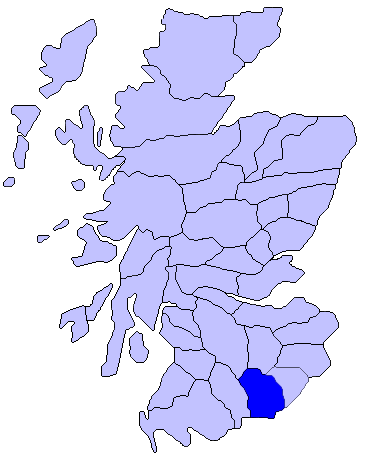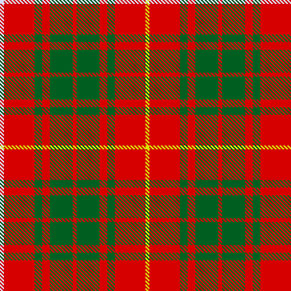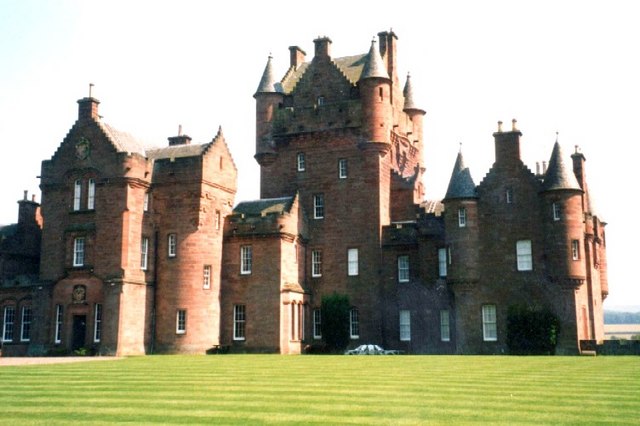|
Lords Of Annandale
The Lordship of Annandale was a sub-comital lordship in southern Scotland ( Annandale) established by David I of Scotland by 1124 for his follower Robert de Brus. The following were holders of the office: *Robert de Brus, 1st Lord of Annandale, 1113 x 1124-1138 * Robert de Brus, 2nd Lord of Annandale, 1138 x-1194 * William de Brus, 3rd Lord of Annandale, 1194-1211 x 1212 * Robert de Brus, 4th Lord of Annandale, 1211 x 1212-1226 x 1233 *Robert de Brus, 5th Lord of Annandale, 1226 x 1233–1292; resigned the lordship to Annadale on the accession of John Balliol in 1292. *Robert de Brus, 6th Lord of Annandale, 1292-1295 * John Comyn III of Badenoch, 1295–1296; Annandale seized and granted to John on Robert's refusal to attend the Scottish host. *Robert de Brus, 6th Lord of Annandale, 1296-1304 * Robert de Brus, 7th Lord of Annandale (King Robert), 1304-1312 * Thomas Randolph, 8th Lord of Annandale, 1312–32 * Thomas Randolph, 9th Lord of Annandale, 1332 * John Randolph, 10th Lord ... [...More Info...] [...Related Items...] OR: [Wikipedia] [Google] [Baidu] |
Annandale, Dumfries And Galloway
Annandale is a district of Dumfriesshire, Scotland, centred on the dale or valley of the River Annan. It runs north–south through the Southern Uplands from Annanhead (north of Moffat) to Annan, Dumfries and Galloway, Annan on the Solway Firth. It is bordered by Nithsdale to the west and Eskdale, Scotland, Eskdale to the east. The Annandale Way runs the length of the valley, a distance of some . History Annandale is famous for its connection with Robert I of Scotland, Robert the Bruce, as the de Brus family was given this land by David I of Scotland, David I in 1124 as one of the border lordships when David became David, Prince of the Cumbrians, Prince of the Cumbrians. Along with Carrick, Scotland, Carrick, these lands acted as a buffer between the quasi-independent Lordship or Kingdom of Galloway and David's lands of Strathclyde and Cumbria. See also *Annandale distillery *Annadale, Shimla *Lord of Annandale, The Lordship of Annandale References External linksHistoric map ... [...More Info...] [...Related Items...] OR: [Wikipedia] [Google] [Baidu] |
George De Dunbar, 10th Earl Of March
George de Dunbar, 10th Earl of Dunbar and March (1338–1422), 12th Lord of Annandale and Lord of the Isle of Man, was "one of the most powerful nobles in Scotland of his time, and the rival of the Douglases."Anderson (1867), vol.iv:74 Family Pitscottie states that this George is a son of John de Dunbar of Derchester & Birkynside, by his spouse Geiles (or Isabella), daughter of Thomas Randolph, 1st Earl of Moray (d. 1332). John was son of Alexander de Dunbar, Knt. (a younger son of Patrick de Dunbar, 7th Earl of March), although some genealogies place John as a son of Patrick de Dunbar, 8th Earl of March. If John's father Alexander was a younger brother of Patrick de Dunbar, "8th" Earl of March, then John is not a younger brother of Sir Patrick de Dunbar, 9th Earl of March. Scots Peerage identifies George as the son of Sir Patrick de Dunbar and Isabella Randolph, the nephew of Patrick, 9th Earl of Dunbar through his marriage to Agnes Randolph. Sir Patrick was the 9th Earl ... [...More Info...] [...Related Items...] OR: [Wikipedia] [Google] [Baidu] |
Lords Of Annandale
The Lordship of Annandale was a sub-comital lordship in southern Scotland ( Annandale) established by David I of Scotland by 1124 for his follower Robert de Brus. The following were holders of the office: *Robert de Brus, 1st Lord of Annandale, 1113 x 1124-1138 * Robert de Brus, 2nd Lord of Annandale, 1138 x-1194 * William de Brus, 3rd Lord of Annandale, 1194-1211 x 1212 * Robert de Brus, 4th Lord of Annandale, 1211 x 1212-1226 x 1233 *Robert de Brus, 5th Lord of Annandale, 1226 x 1233–1292; resigned the lordship to Annadale on the accession of John Balliol in 1292. *Robert de Brus, 6th Lord of Annandale, 1292-1295 * John Comyn III of Badenoch, 1295–1296; Annandale seized and granted to John on Robert's refusal to attend the Scottish host. *Robert de Brus, 6th Lord of Annandale, 1296-1304 * Robert de Brus, 7th Lord of Annandale (King Robert), 1304-1312 * Thomas Randolph, 8th Lord of Annandale, 1312–32 * Thomas Randolph, 9th Lord of Annandale, 1332 * John Randolph, 10th Lord ... [...More Info...] [...Related Items...] OR: [Wikipedia] [Google] [Baidu] |
House Of Bruce
Clan Bruce () is a Scottish Lowlands, Lowlands Scottish clan. It was a royal house in the 14th century, producing two kings of Scotland (Robert the Bruce and David II of Scotland, David II), and a disputed High King of Ireland, Edward Bruce. Origins The surname ''Bruce (surname), Bruce'' comes from the French ''de Brus'' or ''de Bruis'', derived from the lands now called ''Brix, Manche, Brix'', Normandy, France. There is no evidence to support a claim that a member of the family, 'Robert de Brix', served under William the Conqueror during the Norman Conquest of England. This notion is now believed to have originated in unreliable lists, derived from the later Middle Ages, of people who supposedly fought at the Battle of Hastings. Both the English and Scots lines of the Brus/Bruce family demonstrably descend from Robert de Brus, 1st Lord of Annandale who came to England in 1106. Robert de Brus was a companion-in-arms of Prince David, later David I of Scotland, King David I. In 11 ... [...More Info...] [...Related Items...] OR: [Wikipedia] [Google] [Baidu] |
Archie Duncan (historian)
Archibald Alexander McBeth Duncan (17 October 1926 – 20 December 2017) was a Scottish historian. From 1962 to 1993 he was Professor of Scottish History and Literature at the University of Glasgow. He was also President of the Scottish History Society, and edited the Scottish Historical Review from 1963 to 1970. On giving up his professorship, he became Clerk of Senate and Dean of Faculties, retiring from the university in 2000. From 2001 he was Emeritus Professor of Scottish History and Literature, but continued to publish on the history of Scotland in the Middle Ages In the history of Europe, the Middle Ages or medieval period lasted approximately from the 5th to the late 15th centuries, similarly to the post-classical period of global history. It began with the fall of the Western Roman Empire and .... Select bibliography * ''Scotland: The Making of the Kingdom.'' Edinburgh: Edinburgh University Press, 1973. * ''Regesta Regum Scottorum, v; The Acts of Rober ... [...More Info...] [...Related Items...] OR: [Wikipedia] [Google] [Baidu] |
Earl Of Annandale And Hartfell
Earl of Annandale and Hartfell is a title in the Peerage of Scotland, created in 1661 for James Johnstone. In 1625, the title of Earl of Annandale had been created for John Murray, but it became extinct when his son James died without heirs. James Johnstone, son of Sir James Johnstone, Warden of the West Marches, was created Lord Johnstone of Lochwood in 1633, and in 1643, was further created Earl of Hartfell. Johnstone's son, also James, resigned the earldom and received a regrant of the title, as Earl of Annandale and Hartfell, in 1661, and a further regrant of the same title, but by crown charter, in 1662 to his heirs male of the body, whom failing, his heirs female of the body. William, the second Earl of Annandale and Hartfell, was created ''Marquess of Annandale'' in 1701. At the death of the third marquess, no one could prove a claim to the peerages of either earldoms and therefore they became dormant. The earldoms remained dormant until Patrick Hope-Johnstone's claim wa ... [...More Info...] [...Related Items...] OR: [Wikipedia] [Google] [Baidu] |
Scotland In The High Middle Ages
The High Middle Ages of Scotland encompass Scotland in the era between the death of Donald II of Scotland, Domnall II in 900 AD and the death of King Alexander III of Scotland, Alexander III in 1286, which was an indirect cause of the Wars of Scottish Independence. At the close of the ninth century, various competing kingdoms occupied the territory of modern Scotland. Scandinavian influence was dominant in the northern and western islands, Britons (historical), Brythonic culture in the southwest, the Anglo-Saxon or English Kingdom of Northumbria in the southeast and the Picts, Pictish and Gaels, Gaelic Kingdom of Alba in the east, north of the River Forth. By the tenth and eleventh centuries, northern Great Britain was increasingly dominated by Gaelic culture, and by the Gaelic regal lordship of ''Alba'', known in Latin as either ''Albania'' or ''Scotia'', and in English language, English as "Scotland". From its base in the east, this kingdom acquired control of the lands lying ... [...More Info...] [...Related Items...] OR: [Wikipedia] [Google] [Baidu] |
Earl Of Carrick
Earl of Carrick (or Mormaer of Carrick) is the title applied to the ruler of Carrick, Scotland, Carrick (now South Ayrshire), subsequently part of the Peerage of Scotland. The position came to be strongly associated with the Scottish crown when Robert the Bruce, who had inherited it from his maternal kin, became King of Scots in the early 14th century. Since the 15th century, the title of Earl of Carrick has automatically been held by the heir apparent to the throne, thus the current holder of the title is William, Prince of Wales, Prince William, Duke of Rothesay. Early rulers The earldom emerged in 1186, out of the old Lordship of Galloway, which had previously encompassed all of what is now known as Galloway as well as the southern part of Ayrshire. Though the Lords of Galloway recognised the King of Scots as their overlord, their lordship was effectively a separate kingdom, and had its own laws. The first Lord recorded is Fergus, Lord of Galloway, Fergus, who died in 1161 l ... [...More Info...] [...Related Items...] OR: [Wikipedia] [Google] [Baidu] |
Baronage Of Scotland
In Scotland, "baron" or "baroness" is a rank of the ancient nobility of the Baronage of Scotland, a hereditary Imperial, royal and noble ranks, title of honour, and refers to the holder of a barony, erected into a free barony by Crown Charter, this being the status of a minor baron, recognised by the crown as noble, but not a peer. The Court of the Lord Lyon representing the monarch in Scotland, institutional writers, the registry of Scots Nobility, the Scottish Law Commission Government Website, UK Government Legislation Website and the Scottish Parliament all refer to the noble title of a Scottish baron. These titles were historically called feudal titles, which is incorrect today. When Scotland abolished feudalism in 2004, baronial titles that were once feudal baronies were transformed into personal dignities in law (or baronage titles), disconnected from territorial privileges. Rights in relation to Parliament Some sources, such as the Manorial Society of Great Britain, M ... [...More Info...] [...Related Items...] OR: [Wikipedia] [Google] [Baidu] |
John Stewart, 2nd Duke Of Albany
John Stewart, 2nd Duke of Albany (8 July 1482 – 2 June 1536) was the regent of the Kingdom of Scotland and the count of Auvergne and Lauraguais in France. Early life John was a son of Alexander Stewart, Duke of Albany, son of King James II of Scotland. He was the only son of his father's second marriage, to Anne de la Tour d'Auvergne, daughter of Bertrand VI of Auvergne. The ambitious though unsuccessful Alexander had fled Scotland to France in 1479, and married Anne. He then returned to Scotland after reconciliation with his brother the king, but in 1483 fled to France a second time, being placed in Scotland under a sentence of death for treason. John was born in France, although it is unclear whether this was during his father's first or second stay there, and grew up there with his French mother. Alexander was killed in Paris accidentally in a tournament in 1485 when John was still an infant. He had earlier been married with Catherine Sinclair, daughter of the 3rd ... [...More Info...] [...Related Items...] OR: [Wikipedia] [Google] [Baidu] |
Alexander Stewart, 1st Duke Of Albany
Alexander Stewart, Duke of Albany (7 August 1485), was a Scottish prince and the second surviving son of King James II of Scotland. He fell out with his older brother, King James III, and fled to France, where he unsuccessfully sought help. In 1482 he invaded Scotland with the army of King Edward IV of England and assumed control of the country. Scottish lords turned against him in 1483 and he fled after King Edward died. The second invasion, in 1484, was not supported by the new English king, King Richard III, and failed. He died in a duel with Louis XII of France, Duke of Orléans, by a splinter from Louis's lance. Rise Alexander was the second surviving son of King James II of Scotland and his wife, Mary of Gueldres. Created Duke of Albany before 1458, Alexander also received the earldom of March, and lordships of Annandale and the Isle of Man. In 1460 he travelled to the continent, and to Guelders, the land of his maternal family. On his return in 1464 he was captured ... [...More Info...] [...Related Items...] OR: [Wikipedia] [Google] [Baidu] |
William Douglas, 6th Earl Of Douglas
William, 6th Earl of Douglas (c. 1424 – 24 November 1440) was a Scottish nobleman. In addition to his Earldom of Douglas, he was Earl of Wigtown, Lord of Galloway, Lord of Bothwell, Selkirk and Ettrick Forest, Eskdale, Lauderdale, and Annandale in Scotland, and ''de jure'' Duke of Touraine, Count of Longueville, and Lord of Dun-le-roi in France. He was the eldest son of Archibald Douglas, 5th Earl of Douglas and Lady Eupheme Graham. He married Lady Janet Lindsay, daughter of David, Earl of Crawford, and succeeded to the earldom on the death of his father, who had served as regent of James II. Following Archibald Douglas's death, Sir William Crichton, Sir Alexander Livingston of Callendar, and James Douglas, Earl of Avondale (William Douglas's great-uncle) shared power. Together they conspired to break the power of the late Archibald Douglas's family, and summoned William and his younger brother David to Edinburgh Castle. The so-called ' Black Dinner' which fol ... [...More Info...] [...Related Items...] OR: [Wikipedia] [Google] [Baidu] |


